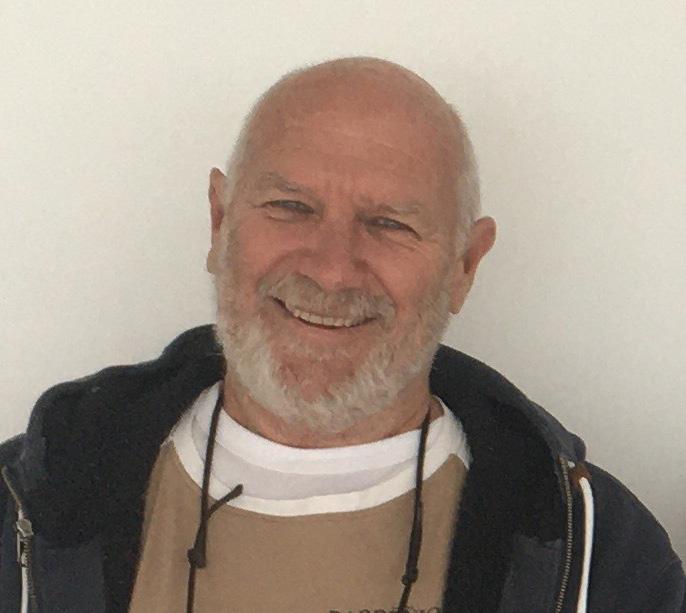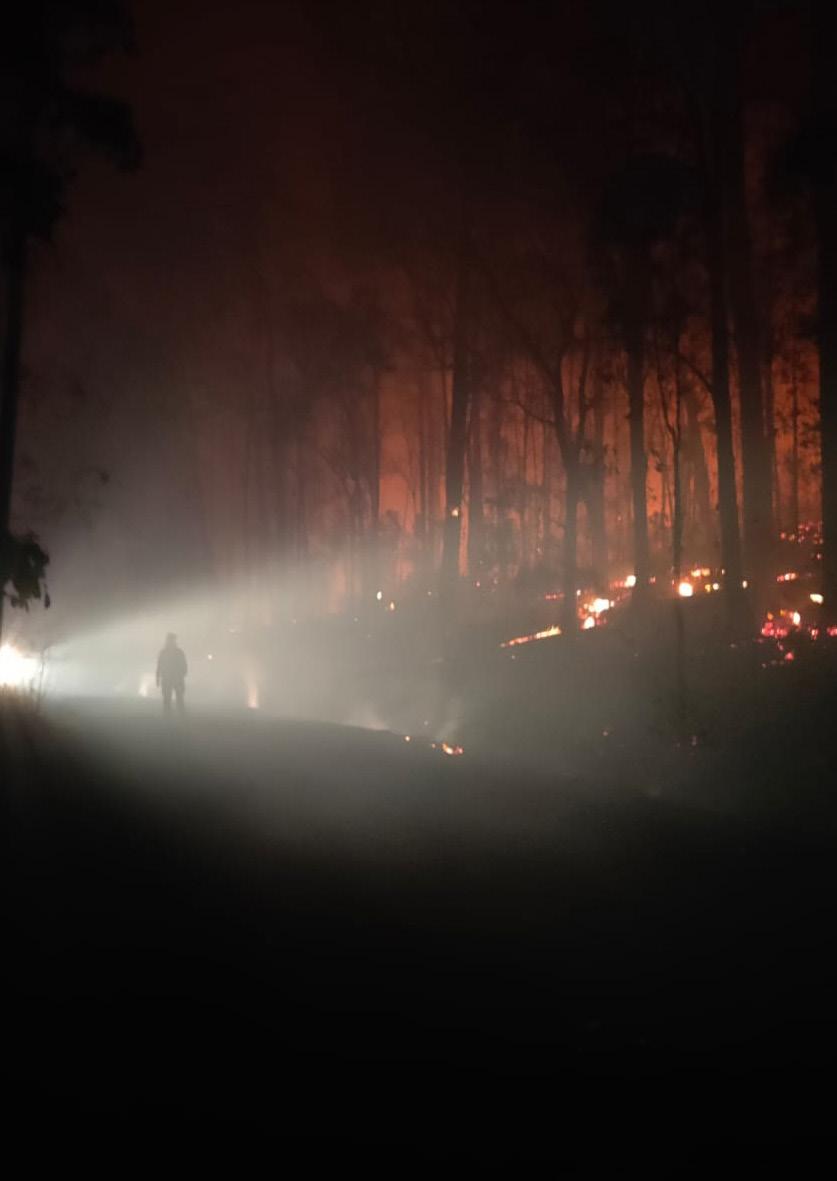
5 minute read
Australia: Painters One Day, Firefighters The Next
Australia:
PAINTERS ONE DAY, FIREFIGHTERS THE NEXT
Advertisement
By Jo Wilson
It’s been a big year. With a global pandemic taking over our day to day lives, it seems like a lifetime ago that Australia was in the grips of one of our worst fire outbreaks in our country’s history.
Bushfires began blazing in Australia last September, and intensified over the next few months to “apocalyptic” levels, as more than 15.6 million acres burned. The fires killed at least 25 people and destroyed 2,000 homes. Experts also estimate that over 1 billion animals died during the seemingly endless assault from bushfires.
Both professional firefighters and thousands of volunteers worked day and night to stop the fires’ spread. Amongst those putting their lives on the line were two of the painting industries veteran painters.
Tasmanian painting contractor, Simon Thomas and NSW painting contractor Bob Jansma together have almost 80 years of painting experience between them.
Being self-employed meant that when the fires broke out late last year, both volunteer firefighters were ready to take time off their day job and deploy to NSW to do their bit on the front line.
Painters Domain magazine chats to each of these brave blokes about their experiences when, as both say, “the shit hit the fan.”

Name: Bob Jansma Location: NSW Painting Career: 45 years. Firefighting Career: Since 1998
HOW DID YOU BEGIN IN THE PAINTING INDUSTRY?
My father and uncle were painters in Sydney during the 60’s and 70’s, so I used to help out during school holidays and was quite proficient by the time I’d finished my HSC. When I moved to the coastal village where I am, I found there was no work. A bit of networking had me talking to some people who heard that I could paint, and I began from there.
WHAT LED YOU TO BECOME A VOLUNTEER FIREFIGHTER?
Unless you live in a country town or village it’s hard to understand volunteering. 80% of people in the village I live in volunteer in some way or another. It might be with a progress association, coastal patrol, sports club, or fire brigade. I tend to wear many hats

– Bob Jansma
HOW OFTEN DO YOU GET A CALL TO FIGHT FIRES?
When I first joined, I was highly active, going to training, and doing extra courses, to reach the Crew Leader stage, which now puts me into a position where I am a Deputy Captain of the brigade. After all the kids I have had (six of mine and a couple of foster kids), I pulled back a bit and told the brigade that I was still there for when shit hit the fan.
WHAT WAS YOUR INVOLVEMENT IN THE 19/20 FIRES?
I had a regular shift I was on that went from 5pm until 1am, although depending on what happened that could go until 3 or 4am, with a couple of all-nighters. This lasted for around about a month, although my Captain and a few others went to the North Coast of NSW for three weeks and when they arrived back the shit really did hit the fan here.
In the scheme of things, yes, by far the biggest in NSW, maybe even Australia. It just went on and on. You would wake up in the morning hoping that it had gone away but then have a sigh and say here we go again.
WHAT WAS THE HARDEST PART OF THE EXPERIENCE?
These were the most devastating fires that have happened in most people’s lifetimes. The loss of a good mate who tried to save his house and the loss of properties will scar me.
WHAT DO YOU LOVE ABOUT BEING A FIREFIGHTER?
I enjoy the comradery of the men and women I serve with. That makes the job so much easier. You must also trust whoever is in charge and in each other, although it does haunt me at times. The first time I drove through the area where 90 houses burnt down, I was brought to tears. A few days later we had to go through again and the resilience of the people was something I will never forget and still tears me up a bit thinking of them.

Name: Simon Thomas Location: Tasmania Painting Career: 33 years Firefighting Career: 2 years
WHAT LED YOU TO GET INTO THE PAINTING INDUSTRY?
I was initially attracted by the artistic side of the industry, but over time that expanded into every part of the trade. I have been pretty blessed by the industry and have worked in some interesting places, from remote South West Tasmania, Islands in Indonesia and several mine sites in Central Africa. I think this is what gave me the tools to become a Tafe lecturer in W.A for 11 years.
WHY DID YOU BECOME A FIREFIGHTER?
“I wanted to give something back to the community” is the usual answer and a big part of that is true, but to be honest, I think there’s an opportunity to test your own courage, to see if you have what it takes, when the shit hits the fan. There is no greater feeling than saving someone’s life or property.
We would average out to one callout a month in my area. The rate of fires in Tasmania has increased slightly over the last decade due to climate change, and callouts are coming more often, but I am situated in a valley where our fire risk is fairly low. Our callouts are a mixture of Structure fires, MVA’s (motor vehicle accidents) and vegetation fires.
WHAT WAS YOUR INVOLVEMENT IN THE 2020 FIRES?
I did two interstate deployments for the 19/20 fires. A week in Kempsey, NSW and a week in Cooma near the Snowy Mountains.
Without a doubt! On both of the 20- man Strike Teams that I was deployed with, the sentiment was the same; the biggest for everyone. And, we had some very long serving members on those teams!
WHAT WAS IT LIKE?
I had the most amazing experiences on both of my deployments and met some truly inspiring people. We saved some properties and gave the RFS guys some much needed rest. This alone made it worthwhile. If you ever wanted to be a part of something great, I can highly recommend it. What’s not to love? Amazing people with a great support network. We Aussies have the community spirit in spades and getting involved is extremely rewarding. I haven’t yet had to deal with a death, so I guess that is something I will have to see how I cope with, if and when it happens.










